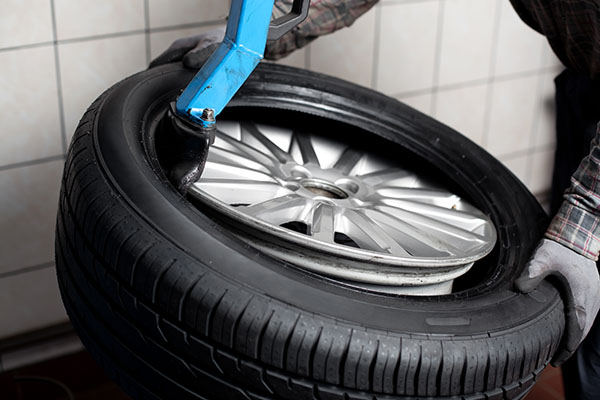
Have you ever experienced vibrations or an uncomfortable ride while driving? If so, your vehicle's wheels may be out of balance. Wheel balancing is a crucial maintenance procedure that ensures the weight distribution of the wheels is uniform, resulting in a smooth and safe driving experience. Let's take a closer look at how this procedure is performed and why it's important.
Wheel Balancing Process
Wheel balancing is typically performed using specialized equipment at an automotive service center. The process involves the following steps:
- Wheel Removal: The wheels are removed from the vehicle, allowing access to the tires and rims.
- Tire Inspection: Each tire is carefully inspected for any signs of damage, uneven wear, or bulges. Damaged tires are typically replaced because they hinder the balance and performance of the car.
- Mounting on the Balancing Machine: The tire and rim assembly is mounted onto a wheel balancing machine. This machine spins the wheel at high speed to measure its balance.
- Weight Placement: The machine identifies any imbalances by measuring the forces acting on the wheel. Based on these measurements, small weights are strategically placed on the rim to counterbalance the uneven weight distribution.
- Verification: After the weights are applied, the wheel is spun again to confirm that it is now balanced. Adjustments may be made if necessary.
- Reinstallation: The balanced wheels are then reinstalled onto the vehicle.
Is Wheel Balancing Important?
Smooth Ride
Balanced wheels ensure a smoother and more comfortable driving experience. When wheels are out of balance, vibrations can occur, leading to an uncomfortable ride for both the driver and passengers.
Effect: Properly balanced wheels eliminate these vibrations, allowing for a smoother ride and reducing driver fatigue.
Tire Wear Reduction
Imbalanced wheels can cause uneven tire wear. Excessive tire wear not only reduces the lifespan of the tires but also affects the vehicle's handling and performance.
Effect: Wheel balancing helps distribute the weight evenly across the tire tread, minimizing uneven wear patterns and prolonging the life of the tires.
Improved Handling and Safety
Balanced wheels contribute to better handling and improved safety on the road. When wheels are balanced, the tires maintain optimal contact with the road surface, enhancing traction and grip.
Effect: This improves the vehicle's ability to respond to steering inputs, especially during sudden maneuvers or emergency situations, reducing the risk of accidents.
Suspension and Component Protection
Wheel imbalance can put additional stress on the suspension system and other vehicle components. The constant vibrations caused by imbalanced wheels can lead to premature wear and potential damage to suspension components, wheel bearings, and even the steering system.
Effect: Wheel balancing helps protect these critical components, reducing the likelihood of costly repairs.
Kwik Kar Auto Repair – Beltline is here to help with all of your wheel, tire, and rim-related procedures, as well as any other car maintenance and repairs. Simply contact us from any of the methods down below, and we will be happy to assist you!